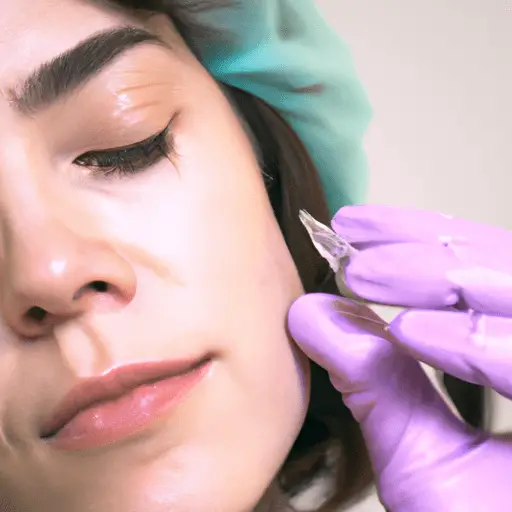-
Table of Contents
- Achieve Your Best Self This Summer with Botox!
- Key Takeaways
- Introduction: Unleashing the Power of Botox
- The Magic of Botox
- Beyond Aesthetics: The Medical Benefits of Botox
- Choosing the Right Provider
- Aftercare: Maintaining Your Results
- FAQ Section
- 1. Is Botox safe?
- 2. How long does Botox last?
- 3. Does Botox hurt?
- 4. Can Botox be used to treat migraines?
- 5. Can Botox be used to treat excessive sweating?
- Conclusion: Embrace Your Best Self with Botox
- Further Analysis
- Key Takeaways Revisited
Achieve Your Best Self This Summer with Botox!

[youtubomatic_search]
Key Takeaways
- Botox is a popular non-surgical cosmetic treatment that can help you look and feel your best this summer.
- It is a safe and effective way to reduce the appearance of wrinkles and fine lines.
- Botox can also be used to treat a variety of medical conditions, including migraines and excessive sweating.
- Choosing a qualified and experienced provider is crucial for achieving the best results.
- Proper aftercare is essential to maintain the results of Botox treatment.
Introduction: Unleashing the Power of Botox
As summer approaches, many of us are looking for ways to look and feel our best. One increasingly popular method is Botox, a non-surgical cosmetic treatment that can help reduce the appearance of wrinkles and fine lines. But Botox isn’t just for aesthetics – it can also be used to treat a variety of medical conditions, including migraines and excessive sweating. In this article, we’ll explore how you can achieve your best self this summer with Botox.
The Magic of Botox
Botox, or Botulinum toxin, is a neurotoxic protein produced by the bacterium Clostridium botulinum. When injected in small amounts, it can block signals from the nerves to the muscles, causing the muscles to relax and reducing the appearance of wrinkles and fine lines. According to the American Society of Plastic Surgeons, Botox was the most popular minimally invasive cosmetic procedure in 2019, with over 7.7 million procedures performed in the United States alone.
Beyond Aesthetics: The Medical Benefits of Botox
While Botox is best known for its cosmetic benefits, it can also be used to treat a variety of medical conditions. For example, it can be used to treat chronic migraines by blocking the signals that trigger these painful headaches. It can also be used to treat hyperhidrosis, or excessive sweating, by blocking the nerves that stimulate the sweat glands. According to a study published in the Journal of the American Academy of Dermatology, Botox injections can reduce sweating by up to 87%.
Choosing the Right Provider
Choosing a qualified and experienced provider is crucial for achieving the best results with Botox. Look for a provider who is board-certified in dermatology or plastic surgery and has extensive experience with Botox injections. It’s also important to choose a provider who takes the time to understand your goals and develop a personalized treatment plan.
Aftercare: Maintaining Your Results
Proper aftercare is essential to maintain the results of your Botox treatment. This includes avoiding strenuous exercise and heat exposure for 24 hours after treatment, as these can increase blood flow and cause the Botox to spread to unintended areas. It’s also important to avoid rubbing or massaging the treated area, as this can also cause the Botox to spread.
FAQ Section
1. Is Botox safe?
Yes, when administered by a qualified and experienced provider, Botox is considered safe. However, like any medical procedure, it does carry some risks, including bruising, swelling, and in rare cases, muscle weakness or drooping eyelids.
2. How long does Botox last?
The effects of Botox typically last between three to six months. However, this can vary depending on the individual and the area treated.
3. Does Botox hurt?
Most people report that Botox injections feel like a quick pinch or sting. However, your provider can use a topical anesthetic to numb the area and reduce discomfort.
4. Can Botox be used to treat migraines?
Yes, Botox is approved by the FDA for the treatment of chronic migraines. It works by blocking the signals that trigger these painful headaches.
5. Can Botox be used to treat excessive sweating?
Yes, Botox can be used to treat hyperhidrosis, or excessive sweating, by blocking the nerves that stimulate the sweat glands.
Conclusion: Embrace Your Best Self with Botox
Whether you’re looking to reduce the appearance of wrinkles and fine lines, treat chronic migraines, or manage excessive sweating, Botox can help you achieve your best self this summer. By choosing a qualified and experienced provider and following proper aftercare, you can ensure the best results from your Botox treatment.
[youtubomatic_search]
Further Analysis
In conclusion, Botox is a versatile treatment that offers both cosmetic and medical benefits. It’s a safe and effective way to look and feel your best this summer. Remember, the key to achieving the best results with Botox is choosing a qualified and experienced provider and following proper aftercare.
Key Takeaways Revisited
- Botox is a popular non-surgical cosmetic treatment that can help you look and feel your best this summer.
- It is a safe and effective way to reduce the appearance of wrinkles and fine lines.
- Botox can also be used to treat a variety of medical conditions, including migraines and excessive sweating.
- Choosing a qualified and experienced provider is crucial for achieving the best results.
- Proper aftercare is essential to maintain the results of Botox treatment.

Leave a Reply